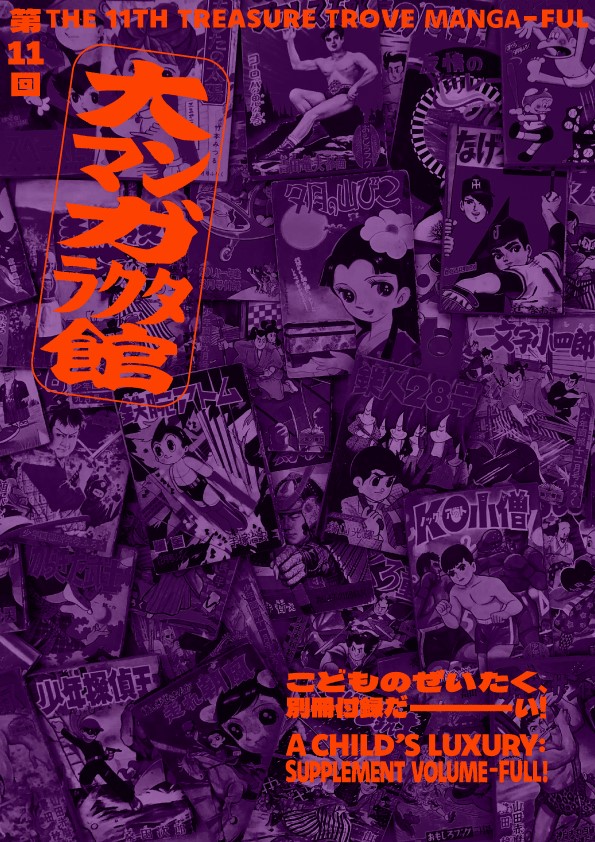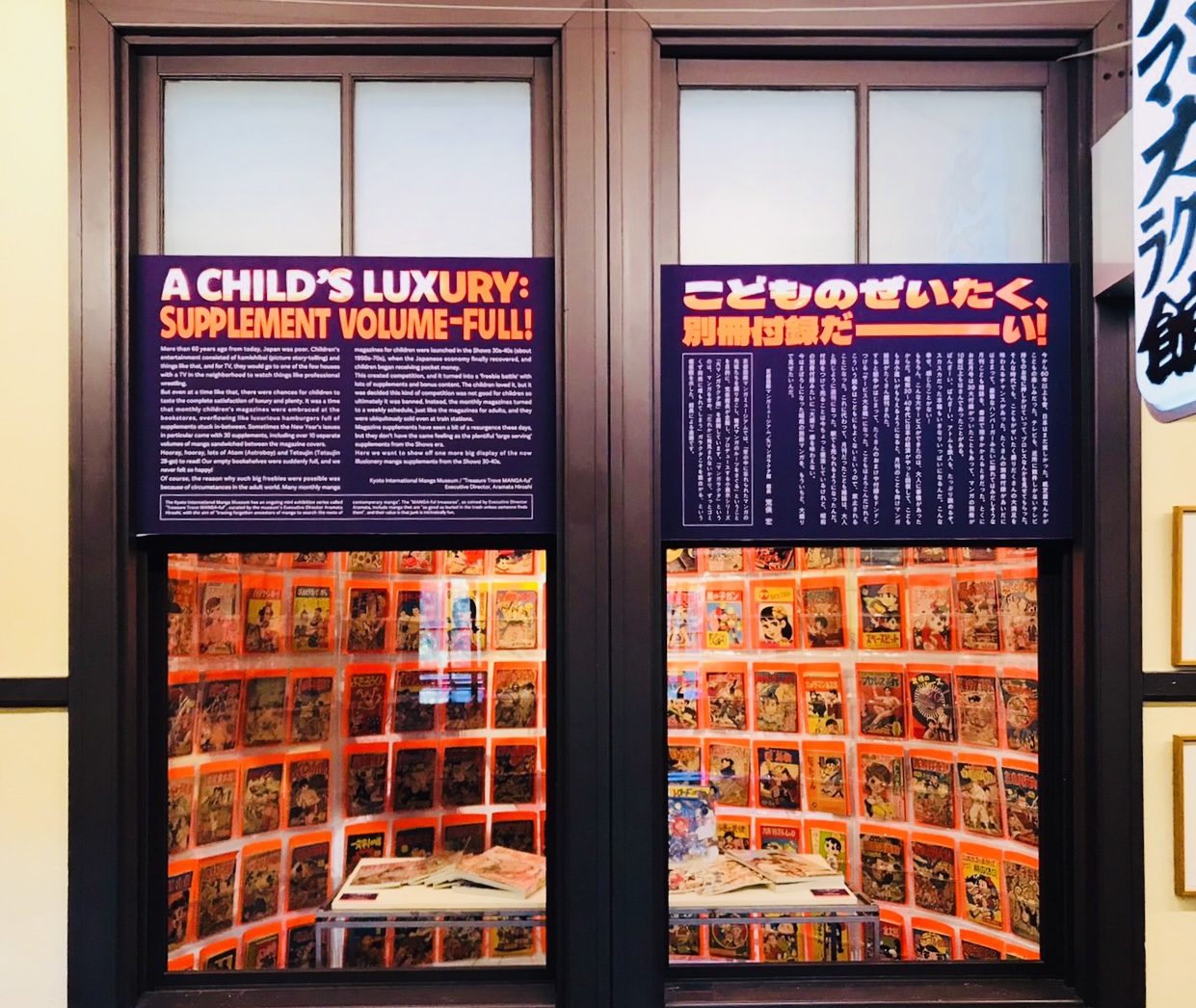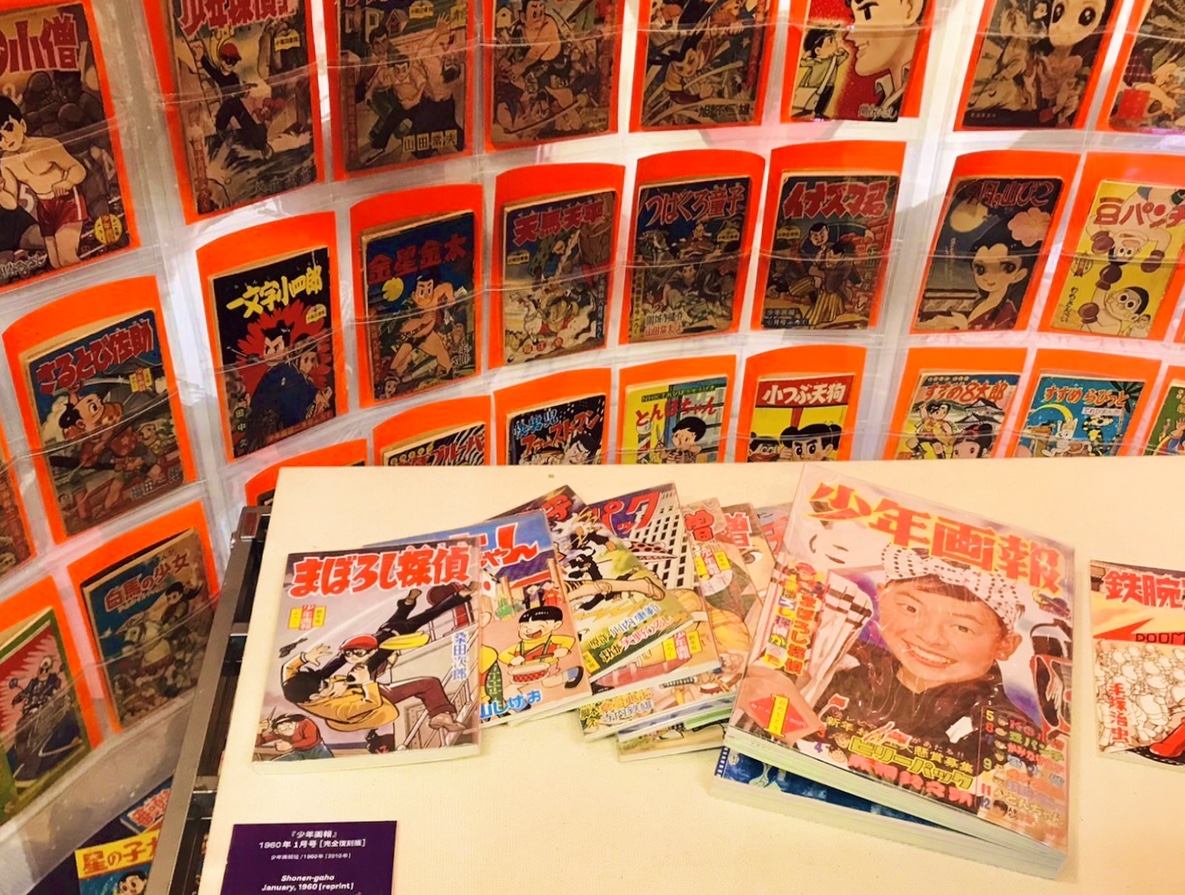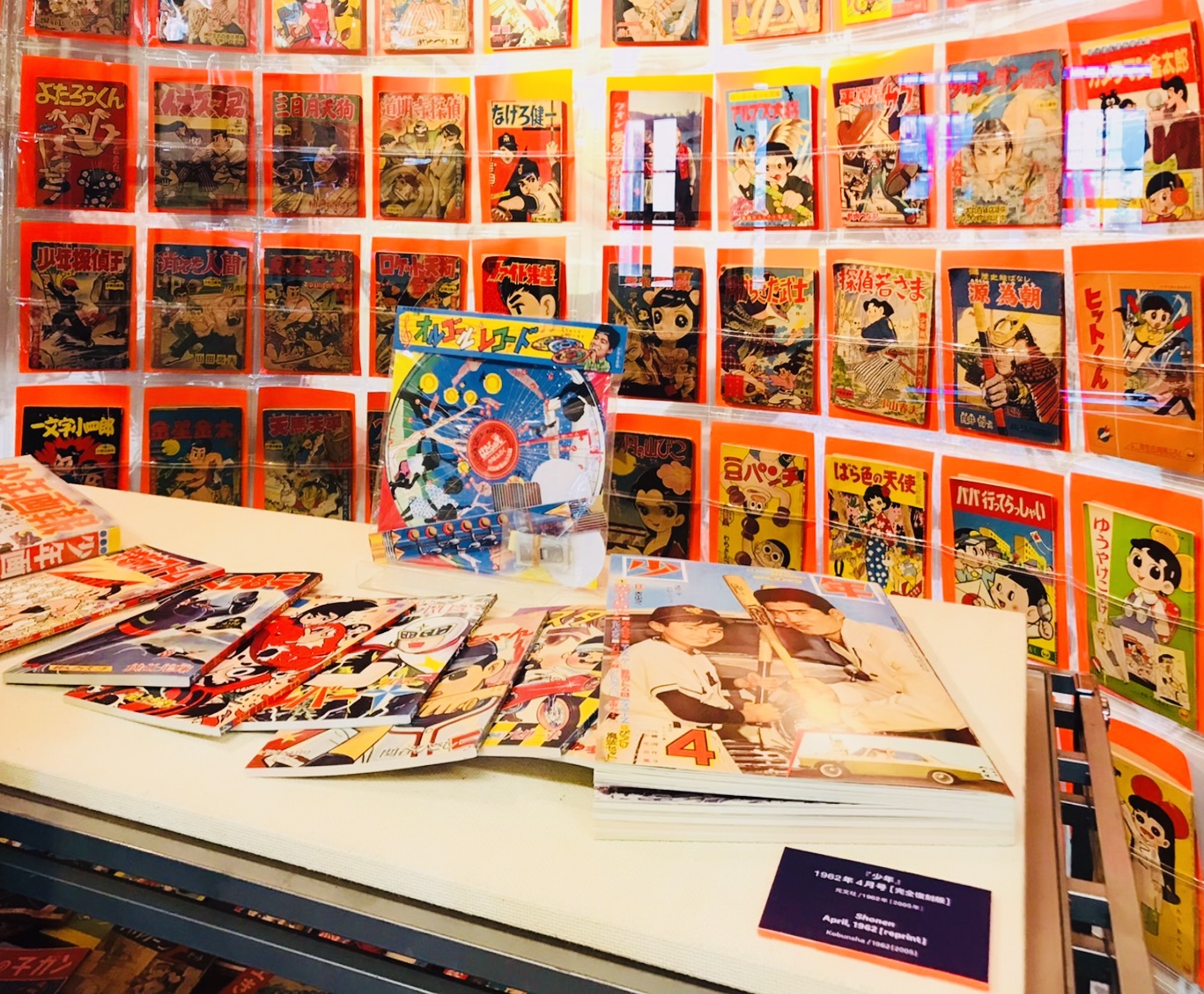
The 11th Treasure TroveMANGA-ful
A child’s luxury – Supplement volume-full!
2023/8/12(sat) ~
Venue
2F In front of executive director's office
Closures
Every Wednesday
Click here for details on the opening calendar
Online Ticket
*Same-day tickets can be purchased at the ticket vending machine at the entrance on the day of the
*You can purchase the admission ticket at the ticket vending machine when you enter the museum on the day you visit, or you can purchase it online in advance.
Content
The Kyoto International Manga Museum has an ongoing mini exhibition series called “Treasure Trove MANGA-ful”, curated by the museum’s Executive Director Aramata Hiroshi, with the aim of “tracing forgotten ancestors of manga to search the roots of contemporary manga”. The “MANGA-ful treasures”, as coined by Executive Director Aramata, include manga that are “as good as buried in the trash unless someone finds them”, and their value is that junk is intrinsically fun.
(From the greetings of the exhibition by Director Aramata)
More than 60 years ago from today, Japan was poor. Children's entertainment consisted of kamishibai (picture story-telling) and things like that, and for TV, they would go to one of the few houses with a TV in the neighborhood to watch things like professional wrestling.
But even at a time like that, there were chances for children to taste the complete satisfaction of luxury and plenty. It was a time that monthly children's magazines were embraced at the bookstores, overflowing like luxurious hamburgers full of supplements stuck in-between. Sometimes the New Year's issues in particular came with 30 supplements, including over 10 separate volumes of manga sandwiched between the magazine covers.
Hooray, hooray, lots of Atom (Astroboy) and Tetsujin (Tetsujin 28-go) to read! Our empty bookcases were suddenly full, and we never felt so happy!
Of course, the reason why such big freebies were possible was because of circumstances in the adult world. Many monthly manga magazines for children were launched in the Showa 30s-40s (about 1950s - 1970s), when the Japanese economy finally recovered, and children began receiving pocket money.
This created competition, and it turned into a 'freebie battle' with lots of supplements and bonus content. The children loved it, but it was decided this kind of competition was not good for children so ultimately it was banned. Instead, the monthly magazines turned to a weekly schedule, just like the magazines for adults, and they were ubiquitously sold even at train stations.
Magazine supplements have seen a bit of a resurgence these days, but they don't have the same feeling as the plentiful 'large serving' supplements from the Showa era.
Here we want to show off one more big display of the now illusionary manga supplements from the Showa 30-40s.
Kyoto International Manga Museum / “Treasure Trove MANGA-ful”
Executive Director, Aramata Hiroshi



Organizers: Kyoto International Manga Museum / Kyoto Seika University International Manga Research Center
*Due to the spread of COVID-19, the schedule and content of the exhibition and museum closure can change.
Thank you for your understanding.